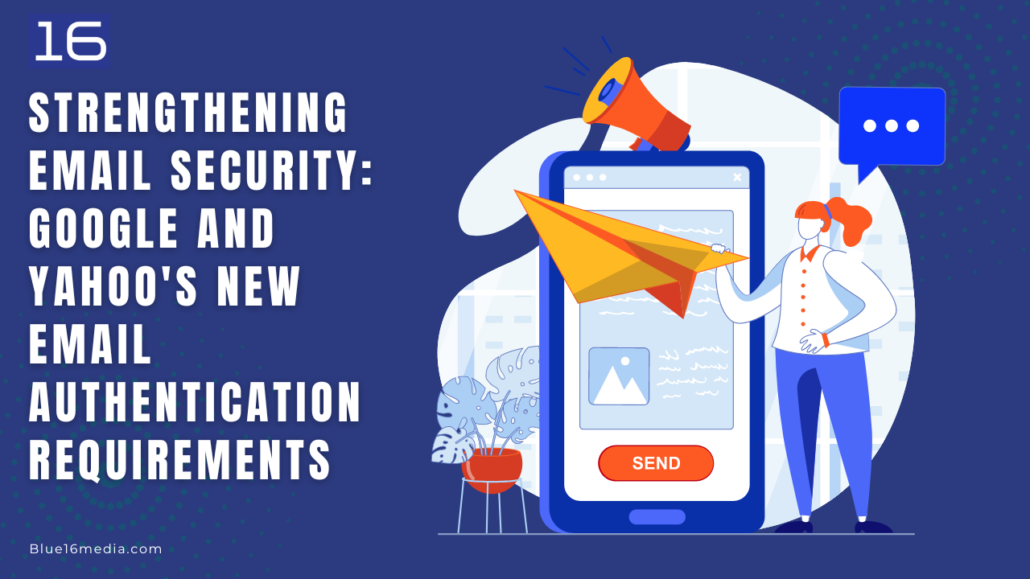As part of their ongoing commitment to ensuring user security and improving deliverability, Google and Yahoo have announced the implementation of new email authentication requirements for all email senders. These important changes will come into effect in February 2024 and are set to reshape how spam and fraudulent emails are dealt with, creating a safer email environment for everyone.
Both giants are stacking up their defenses against fraudulent messages like scams and phishing attempts, which have seen an increased prevalence in recent years. The heart of this initiative is the dismissal of any emails sent from unauthenticated email addresses, preventing them from reaching users’ inboxes. While these changes may initially seem ambiguous or technical, their effects can be significantly beneficial to the daily internet user.
Enhancing Email Deliverability
The primary goal of these new authentication requirements is to enhance email deliverability. By making these improvements and adjustments, Google and Yahoo are ensuring that only authenticated, legitimate emails make their way into your inbox. As a result, users can feel safer and more secure, knowing the emails they receive are being rigorously checked for their authenticity.
Protecting Against Spam and Fraudulent Emails
These changes combine to form a powerful defense against spam and other types of fraudulent emails. Scams and phishing attempts, for instance, often originate from unauthenticated sources. By proactively blocking these sources, there is a massive reduction in instances of such attacks reaching users’ inboxes. The changes hope not only to protect users’ personal data but also to create an environment where these types of activities find it increasingly hard to operate.
A Call to Email Senders
For all email senders, these changes mean that you must ensure that your emails are being sent from authenticated email addresses. Making sure to check your records and ensure they are set up are important. This due diligence will aid in your emails reaching your recipients without any issues and will also contribute to the communal fight against spam and fraudulent messaging.
There are 3 DNS Records you will want to check to make sure you have good email delivery. These are:
- Reverse DNS (PTR)
- SPF (Sender Policy Framework)
- DKIM (DomainKeys Identified Mail)
While it will affect mass emails or email newsletters, remember that all emails you send are affected by these records. So it will help to make sure that they are set up correctly.
Making Sense of Email Authentication: The Trio of Trust
Setting up your business’s email might sound as intricate as a sushi chef’s knife skills, but don’t you worry—here’s a friendly breakdown of those techie terms so you can wield your marketing tools with just as much precision. At Blue 16, we’re about more than just strategies; we’re about empowering you to shine in the vast digital marketplace. Let’s lift the hood on these email essentials that are your armor in the battle against spam and scam.
Reverse DNS (PTR)
Imagine you’re at a carnival, and you’ve just won a giant teddy bear. But before you can take it home, the person at the booth double-checks your game ticket—that’s kind of what Reverse DNS (or PTR records) is all about. It’s like a backstage pass for your emails. When you send out an email, the internet checks the ticket (your IP address) to make sure it matches the name listed on the ‘guest list’ (your domain). If things don’t match up, it’s like someone trying to enter with a ‘suspect’ ticket—your email might get booted to the spam folder. And we certainly don’t want that, do we?
SPF (Sender Policy Framework)
Next up, the SPF record—your very own digital bouncer. This record lists all the mail servers that are allowed to send emails on behalf of your domain. Every time an email is sent, the SPF record tells the receiving server, “Hey, I know them, they’re cool—let ’em in!” No SPF? That’s like throwing a party without anyone to check the invites. You might get party crashers (spammers) pretending to be you. SPF keeps the riff-raff out, maintaining your good name and ensuring your emails get to mingle in the inboxes they’re meant for.
DKIM (DomainKeys Identified Mail)
Finally, let’s talk DKIM—think of it as the wax seal on the envelope of yesteryear. It gives your emails a unique digital signature that’s verified along the way. When your email is sent, it’s as if it’s sealed with your personal stamp. The receiving server checks the seal to make sure it’s authentic and hasn’t been tampered with. If the seal checks out, your email is welcomed with a VIP status. If not, it’s flagged. A solid DKIM record says, “This email is 100% the real deal,” upholding your reputation and delivery success.
Each of these records—PTR, SPF, and DKIM—work harmoniously to ensure your emails reach their destination safely and securely. At Blue 16, we roll out the technological red carpet so that your business’s emails are given the star treatment they deserve.
For help in checking your email authentication, remember that we are here to assist you. Do not hesitate to reach out if you need additional information or support. Our team is more than happy to clarify these requirements and help ensure your email delivery remains unaffected. You’re not alone in navigating these changes – we’ve got your back!


